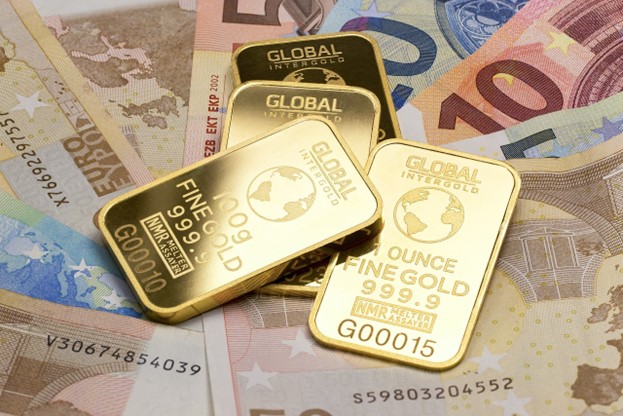Gold (XAUUSD) has always been a fascinating tradeable instrument and is among the most popular choices for investors. Despite being highly volatile, it remains a safe-haven asset during economic uncertainty, which is one of the reasons why forex traders prefer it over other assets. In this article, we’ll look at the factors affecting gold prices while analysing key indications and trends for those looking to trade in gold.
Factors Affecting Gold Prices
In forex, gold is traded using standardised derivative contracts (CFDs), represented by the symbol XAU/USD. Traders use various platforms that brokers offer to make long or short bets on the price of gold. Global economic conditions, geopolitical events, interest rates, and market mood are some of the factors that affect gold prices. Below, we discuss them briefly.
Global Economic Conditions
Gold’s price fluctuates wildly in response to the global economy, especially changes in the rate of the U.S. Dollar. Forex traders often flee to safe-haven assets like gold when economic or geopolitical tensions rise, increasing demand and prices. However, yellow metal prices fall when the U.S. currency strengthens, suggesting improved economic conditions.
Central Bank Policies
Major central banks’ policies, such as those of the Federal Reserve and the European Central Bank, significantly impact gold prices. Similarly, monetary policy shifts, changes in quantitative easing, or interest rate choices also trigger gold price swings.
Rates of Interest and Price Hikes:
The precious metal is typically considered a buffer against inflation, although its allure as an investment can rise and fall with interest rate fluctuations. Increasing interest rates could dampen demand for gold because traders seek greater returns elsewhere. However, if interest rates continue to fall, gold may become a more appealing alternative as a safe haven investment.
Demand and Supply
Like other commodities and financial instruments in the forex market, the laws of supply and demand heavily influence gold price changes. The supply-demand equilibrium fluctuates in response to changes in gold production, industrial use, and central bank purchases and sales of gold reserves.
Market Sentiment and Speculation
Speculative trading and investor moods can also lead to temporary but significant price fluctuations. Gold’s dramatic price moves can be attributed to the speculative interest it draws during times of uncertainty due to its perceived position as a safe haven.
Gold Price Analysis
Gold trading in forex involves several methods for spotting trends, predicting price changes, and making profitable trades. Forex traders perform various types of analysis when trading gold. Some of the most common analysis methods are discussed below.
Technical Analysis
To do a technical analysis, one must examine price charts from the past and use numerous indicators to spot patterns and possible reversal points. Moving Averages (MA), the Relative Strength Index (RSI), and Fibonacci levels are all examples of popular indicators used for technical analysis.
Fundamental Outlook
Gold price fundamental research examines supply and demand, economic and political developments, and other fundamental issues. Essentially, you can better understand long-term trends by considering the economy’s bigger picture.
Sentiment Analysis
Sentiment analysis determines how forex traders feel about gold. You can perceive the market’s mode with sentiment analysis of the news, social media monitoring, and polling.
Correlation
The price of gold tends to change in tandem with other assets like equities, bonds, and commodities. By seeing these relationships, traders can better diversify their holdings and act confidently.
Emerging Trends For Gold Trading
The gold market is a good example of how trends in the broader financial markets can shift. There have been several recent changes that have had an impact on the gold market. Let’s quickly review some of them below.
Digital Gold Trading
Digital gold trading platforms are growing in popularity due to technological developments. These platforms allow traders to buy and sell real gold in fractions and store their holdings backed by physical gold in secured online wallets.
ESG Considerations
ESG stands for environmental, social, and governance factors. These factors are critical when trading gold since traders are becoming more conscious of sustainability and ethical practices. Currencies can rise or fall based on ESG considerations. For instance, a country’s currency value may shift if it adopts more stringent ESG standards. Therefore, forex traders should be aware of the ESG-driven currency swings that may indirectly impact gold prices.
Use of EAs and HFT
The rise of algorithmic and high-frequency trading for gold can be directly attributed to developments in information technology. The complicated algorithms and in-depth data analysis these advanced trading methods use allow for rapid trade execution. So, trading yellow metal using EAs and HFTs is becoming a new trend.
Bottom Line
Gold trading requires a profound knowledge of the elements affecting gold’s prices. You must be able to weigh the impact of geopolitical risks, economic conditions, central bank policies, and market sentiment to conduct a meaningful analysis of gold trading besides keeping tabs on developing trends.














